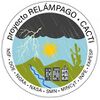CSU-CHIVO
| Deployment Type | Tower-mounted, containerized |
|---|---|
| Frequency | 5.65 GHz (C-band) |
| Operating Modes | STSR, LDR |
| Range Resolution | 50-300m |
| Typical Range | 120-300 km |
| Antenna | 4.5m (1 °) |
| Transmitter | Coaxial Magnetron |
| Receiver | Vaisala RVP9 |
 |
|
CSU-CHIVO is a C-band radar system with a 250 kW magnetron transmitter and a 4.3m (1° beamwidth) antenna. The antenna and radome are on top of a 6.5m (20 ft) steel tower to raise it above surrounding ground clutter. It is packaged in a containerized format for ease of transportation.
The radar is based on the Vaisala WRM200 commercial weather radar system. It is normally based at the ARDEC South radar site near Fort Collins, CO where it supports research scientists at Colorado State University. In 2019, it was used by the National Weather Service office in Boulder, CO as a gap-filler during an extended servicing of the NWS Denver NEXRAD (KFTG). The radar has been deployed several times in support of field campaigns as well.
Technical Overview
Packaging
The radar is packaged into a 20' ISO container which houses the AC power conditioning, radar electronics rack, display and control workstation, networking equipment and deployment tools and spares. The antenna and radome are mounted on top of a 6.1m (20 ft) steel tower. The tower raises the antenna above nearby ground clutter, while keeping the waveguide run between the transceiver and antenna reasonably short.
Transmitter
CHIVO uses a 250 kW coaxial magnetron, driven by a Pulse Systems solid-state modulator with selectable pulse widths up to 0.12% duty cycle. The transmitter and modulator are under control of a Vaisala RVP900, which provides the triggering signals and monitors the transmitter burst pulse to measure and compensate for its frequency and phase drift. The magnetron used (CPI VMC2033) has a mean life of 10,000 hours.
The transmitter output passes through a waveguide assembly which can route the power either through a magic-tee power splitter (for dual-pol operation), or feed the entire output of the transmitter to the horizontal polarization. The selection of polarization mode can be switched on a scan-by-scan basis.
A waveguide dehydrator unit feeds dry air (-20 °C dew point) into the waveguide at a pressure of 350 mbar. This prevents the air within the waveguide from breaking down and arcing due to the high electric fields within.
The transmitter rack also includes the high-power duplexer assembly, which switches the antenna between the radar transmitter and receiver. It also protects the sensitive receivers from damage while the transmitter is generating its output pulse. Test points are provided to monitor the forward and reverse power at the antenna port of the transmitter rack. Built-in power sensor heads monitor the power levels and report them to higher-level software.
Receiver
The same rack that houses the transmitter subsystem includes the radar receivers. CHIVO's receivers use a double-conversion architecture, to improve rejection of out-of-band interferers, while minimizing the impact on noise figure. The duplexer's receive ports are coupled into the receiver low-noise amplifier (LNA) inputs. The receiver also down-converts the burst pulse signal from the transmitter. The resulting intermediate frequency (IF) signals are fed into the Vaisala RVP900 digital receiver module, which converts the If signals into baseband digital representations.
The digital data is streamed into a Linux server that runs the RVP900's signal processor. This software processes the received signals and generates dual-polarization moment data for display and archiving. The radar shelter includes a network attached storage (NAS) array for data archival, and the data is streamed to servers at CSU main campus for long-term archival.
Antenna, radome and tower
The CHIVO radar uses a 4.5m center-fed parabolic reflector antenna. The antenna reflector is made of welded aluminum, and splits into two parts for disassembly. The feed is a dual-polarization scalar horn. The beam width of 1 ° shows that the antenna is slightly under-illuminated, which tapers the horn's illumination of the reflector surface at the edges, resulting in lower overall sidelobe levels of -29 to -30 dB. Comparable antennas on other radars typically achieve .
The antenna is mounted to a yoke-style antenna positioner with a unique belt-drive final reduction. The drive system gearboxes include heaters to extend the operating temperatures to -40 °C. The well-balanced combination of positioner and antenna can achieve 40 °/s scan rates at up to 20 °/s2 acceleration.
The antenna and positioner are protected by a 6.7m foam-core radome. The panels use an A-sandwich design, tuned to the 5.6 GHz operating frequency of the radar to provide the lowest attenuation. The radome has a top vent to promote passive ventilation, maintaining relatively dry conditions inside. This radar does not include radome dehydrators, since the dome does not contain active radar electronics aside from the motion control system.
The tower used for this antenna system is composed of two 3.1m (10 ft) sections. During field deployments, the tower can be split apart and used as a shorter tower, or more segments can be added to increase the tower height depending on the needs of the deployments.
Deployments
CHIVO has been deployed on several field campaigns

ESCAPE 2022
In June 2022, CHIVO supported the Experiment of Sea-Breeze Convection, Aerosols, Precipitation and Environment (ESCAPE)-2022 field campaign in Houston, TX.

preCIP-2021
CHIVO (along with CSU-CHILL) supported the Prediction of Rainfall Extremes Campaign in the Pacific (PRECIP) planning campaign conducted locally in Colorado, designed to train scientists in the operation and analysis of data from C- and S-band radars executing coordinated scans.

RELAMPAGO
In 2018, CHIVO was deployed for three months to Alta Gracia, Argentina in support of the RELAMPAGO-CACTI field campaign.
Gallery
-
CHIVO in Fort Collins, CO (2019)
-
CHIVO in Alta Gracia, Argentina (2018)
-
CHIVO Installation in Argentina (2018)
-
CHIVO Assembly in Fort Collins (2018)
-
CHIVO Disassembly in Fort Collins (2018)
-
CHIVO in Houston, TX (2022)







